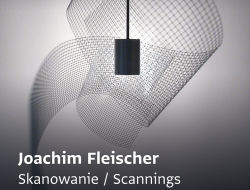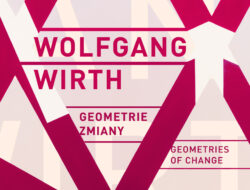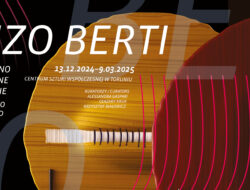opening night: 23.09.2016 at 7pm
artists: Magdalena Angulska, Piotr Bujak, Jagna Ciuchta, Justyna Górowska, Piotr Grabowski, Martyna Jastrzębska, Szymon Kobylarz, Jacek Kryszkowski, Diana Lelonek, Honorata Martin, Aleka Polis, Natalia Wiśniewska
curated by Piotr Lisowski
Man ‘does not exist’ until he evokes a thought on contradiction
Jacek Kryszkowski
A story which has never come into being provides an alibi for our presence in this particular place. The story in question is a discovered typescript of Letters to E.K. and the closest friends, written by Jacek Kryszkowski (1955-2006) and dating back to the mid-1980s, which gave rise to a site inspection based on the surviving text. Its aim was to reconstruct the motives behind the author’s withdrawal from culture. The investigation, which took the form of an exhibition, is set in an ambiguous reality. Perhaps it is merely a fairy tale or another story triggered by the artist. Yet the time and place are irrelevant. What is important is precisely this: presence – something that Kryszkowski cared much about.
The exhibition Bones of all men is dedicated to the memory of Jacek Kryszkowski and presents a specific narrative which stems from his oeuvre. The artist made his debut at the turn of the 1970s and 1980s and became one of the key figures in the budding artistic movement which in 1984 earned the name of ‘The Pitch-in Culture’. The members of the movement insisted on its independence, self-organisation, collectiveness and the spirit of dissent. They began with criticising the artistic world of the time, an activity which led them to make of it a way of life, and relentlessly resisted all attempts at categorisation. In the same vein, they refused to accept any sort of authority, be it social, political, cultural or religious, while the scope of freedom defined by them was a result of their nihilistic attitude towards the reality in which they lived. The exhibition presents some traces of their legacy and of their time, traces which are preserved in the artworks and documentary material produced by such artists as Zbigniew Libera, Zofia Łuczko, Józef Robakowski, Zygmunt Rytka, Tomasz Sikorski, Grzegorz Zygier or the Łódź Kaliska artistic group.
When set against this background, the standpoint of Jacek Kryszkowski appears to have been a consistent strategy, which resulted in the clash of two opposing (and at times contradictory) attitudes. Their meaning is contained in his two mottos: ‘Only there where I am’, which equated life with artistic activity, and ‘Art pollutes the environment’, which was an expression of his doubts concerning the material production of works of art. These opposing attitudes reveal a slowly growing resignation from making objects in favour of intentions and words. In abandoning the institutional system of culture, Kryszkowski directed his work towards building social connections. When it failed, the resignation from culture became the only possible act of presence, as declared by the artist in the late 1980s.
The reasons for this decision, outlined in Letters to E.K. and tinged with mystification and artistic self-interest, define a broader scope of inquiry into the mystery of being, a mystery teeming with creations, people and situations. To quote the author: ‘Letters persistently lead to the loss of values and judgment, despite the fact that it is only these properties that are their building blocks. The notions of “culture”, “civilisation” and “nature” fit in there and merge. (…) And then, at a certain point, I present “culture” as something that is not opposed to “nature”, but rather as something identical, as a sign of the change of strategy in the struggle for survival. I also combine the “culture-nature” with “civilisation” by destroying the contradictions that exist between a tool and faith, an institution and art, science and nature’.
The exhibition focused on the reflections and attitudes of Jacek Kryszkowski aims to invite the viewer to follow a visual narrative devised in co-operation with such artists as Magdalena Angulska, Piotr Bujak, Jagna Ciuchta, Justyna Górowska, Piotr Grabowski, Martyna Jastrzębska, Szymon Kobylarz, Diana Lelonek, Honorata Martin, Aleka Polis and Natalia Wiśniewska. While looking for answers to the question of why Kryszkowski decided to cease participating in culture, we collectively step into a space where the key part is taken by the struggle between nature, civilisation and culture. It is against this backdrop of relations that we may experience both the identity of an individual and social interaction. This is the birthplace of structures in which we live and which we call into question.
The works presented in the exhibition refer to notions grappling with one’s own obsessions, fascinations and grudges. They all offer a reflection on human nature, momentariness and memory, challenge the boundaries between a work of art and its context, and seek radical solutions for combining art and life. As a result, Kryszkowski’s work serves as a starting point for a deeper reflection, one that is in itself an expression of hesitancy and uncertainty with regard to the opportunities and pitfalls related to art.
The exhibition owes its title to a woodcut from the series Dance of Death by the German Renaissance painter and graphic artist Hans Holbein. The scene named Bones of all men has an orchestra of skeletons begin their dance, an extremely popular motif in late mediaeval art and literature, which served as a warning about the implacable fate and a sign of disillusionment with the world. In the context of this exhibition, the motif provokes a disquieting thought saying that ‘in the midst of life we are immersed in death’. But it is perhaps the reason why we are capable of grasping its very nature: at the intersection of Kryszkowski’s thought, drenched with a strong aversion to official culture, and Holbein’s focus on the futility of human endeavours there emerges a story of an intangible attitude – a story of the need for leaving a mark of something that is bound to disappear.
Tags: bones of all man, exhibition
 The Institution is funded from the budget of Toruń Municipality
The Institution is funded from the budget of Toruń Municipality






